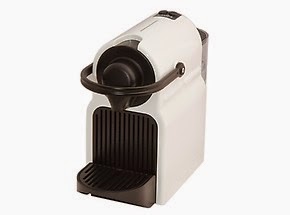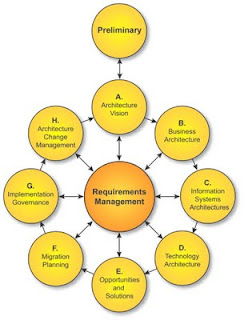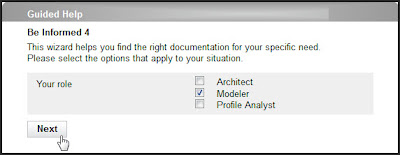Smarter solutions for a better coffee making experience (Part 2)
Let’s continue our exploration of the contextual intelligence domain and see how simple things in our everyday life could potentially be affected by this development. Our goal in this blog series is to design a context-sensitive, smart Nespresso Machine that can provide us with exactly the right cup of coffee at the right time and that can support us in performing simple maintenance activities.
In my previous post we looked at the variables of preparing a cup of coffee with a Nespresso Machine:
Other important aspects like temperature and pressure were left out of the list, because they cannot be influenced with a setting on the machine.
Of course combinations of tastes are possible, creating an unique taste pattern for each user.
As you can see, some of the flavors / smells overlap with the tastes. Of course this is not an exhaustive list, it is merely a first attempt to capture the flavor / smell characteristics of different types of coffee.
In order for our smart coffee machine to be able to predict the right cup of coffee, it has to learn the habits of its users, see patterns and predict what is valid based on the available information.
In this blog series I used the example of a smart coffee solution to illustrate the possibilities of Contextual Intelligence. With this example in mind it is pretty easy to imagine how these principles can be used in the business domain to automate business processes based on context variables. To be continued….
In my previous post we looked at the variables of preparing a cup of coffee with a Nespresso Machine:
- Brewing ratio: ristretto, espresso or lungo
- Additions: sugar / sweets, coffee milk / coffee milk powder, steamed / frothed milk
- Flavor
- Intensity
Other important aspects like temperature and pressure were left out of the list, because they cannot be influenced with a setting on the machine.
Relevant Context Variables
So, what are the relevant context variables that influence our choice of coffee. In my opinion all of these variables can influence our choice:- Taste
- Flavor / smell
- Intensity
- After-taste
- Caffeine
- Day of the week
- Time of day
- Location
Taste
In order to determine the taste preferences of a user we could map specific coffee tastes to more generic tastes and ask the user one time – during registration – for its preferences:- Spicy
- Cocoa
- Roasted cocoa
- Dark Chocolate
- Bitter
- Fruity
- Caramel
- Cereal
- Malted cereal
- Citrus
- Winey
- Sweet
- Flowery
- Mint
- Hazelnut
- Vanilla
- Milk
Of course combinations of tastes are possible, creating an unique taste pattern for each user.
Flavor / smell
Like with taste, the flavor / smell preferences could be asked to the user during registration or initial set up:- Intense
- Roasted cocoa
- Roasted cereal
- Woody
- Flowery
- Caramel
- Citrus
- Malted cereal
- Mint
- Hazelnut
- Vanilla
- Winey
- Sweet
- Neutral
As you can see, some of the flavors / smells overlap with the tastes. Of course this is not an exhaustive list, it is merely a first attempt to capture the flavor / smell characteristics of different types of coffee.
Intensity
The intensity could be classified into five options:- Very intense (viscous, dark black)
- Intense (dark black)
- Neutral (black)
- Mild (dark brown)
- Very mild (brown)
Caffeine
For the caffeine we can simply identify two choices:- With caffeine
- Caffeine free
After-taste
Some people like to still taste the coffee minutes after they finish it, others want to avoid such an after-taste. For this example we can use a generic classification:- Strong after-taste
- Mild after-taste
- No after-taste
Day of the Week and Time of Day
Some people have one coffee recipe that fits their preferences every day of the week. For others the weekend is the time that they drink Latte Machiato’s, while on working days they stick to regular coffee with added milk and sugar. The same is true for the time of day. Perhaps someone likes to drink coffee with caffeine during the day and caffeine free coffee after 5 pm.In order for our smart coffee machine to be able to predict the right cup of coffee, it has to learn the habits of its users, see patterns and predict what is valid based on the available information.
Location
Another context variable that could influence our choice for a cup of coffee is the location. Although a coffee machine typically has a fixed location, I can see the benefit of a smart coffee app on my smart phone that can operate coffee machines at home, in the office, at my clients office, perhaps even in my car.Combining all of these context variables into one smart solution
It takes the experience and knowledge of a barista to mix all of these variables and define the best coffee experience for each user and context. Combine this with a self-learning system that lets users evaluate their coffee after drinking it and improve its advices based on that to create a system that can predict for every user within every context how its cup of coffee should be made.In this blog series I used the example of a smart coffee solution to illustrate the possibilities of Contextual Intelligence. With this example in mind it is pretty easy to imagine how these principles can be used in the business domain to automate business processes based on context variables. To be continued….



Comments